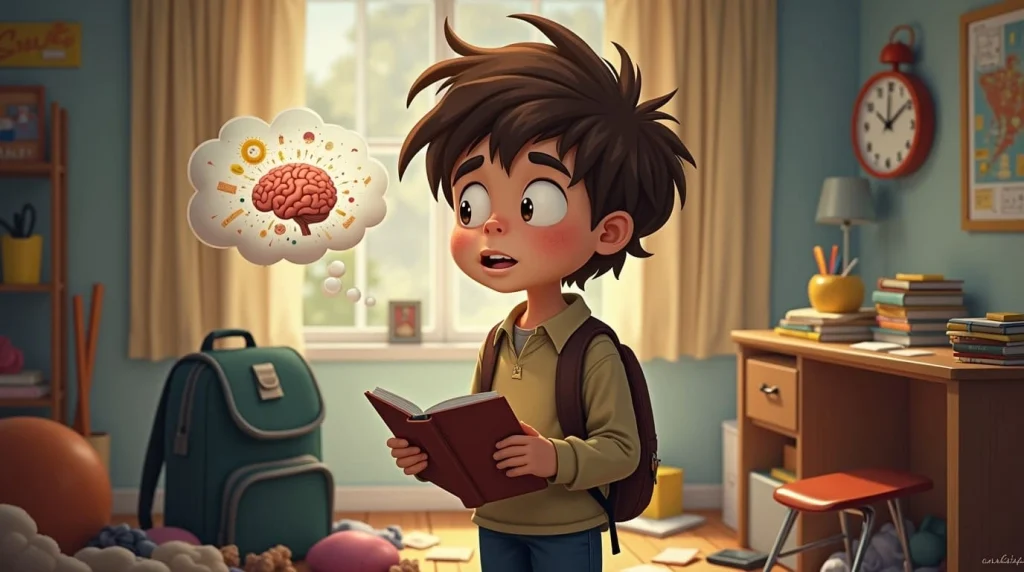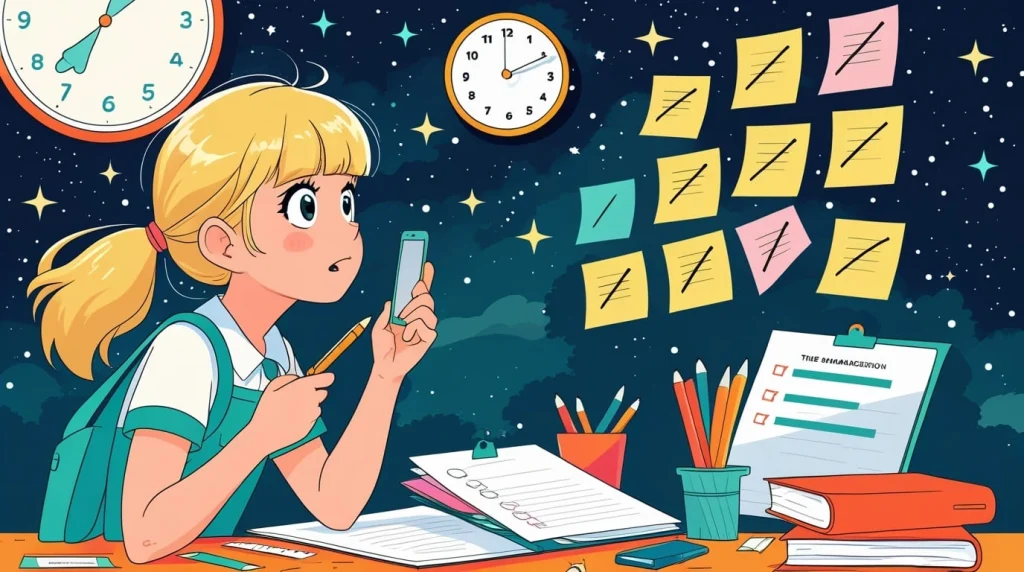What are Learning Difficulties?
Learning difficulties are when people experience challenges with specific areas of learning, such as reading, writing, spelling, maths, or organising information. It is how a person processes, acquires, or retains information, making it harder for them to learn than others of the same age. Learning difficulties are not related to intelligence, but rather to how the brain works. Learning difficulties can be mild, moderate, or severe and occur independently or alongside autism or speech and language needs.
There are two types of learning difficulties – specific learning difficulties (SpLDs) and general specific difficulties. Examples include:
Specific Learning Difficulties (SpLDs):
- Dyslexia – difficulties with reading, writing, and spelling.
- Dyscalculia – difficulties with understanding numbers and maths.
- Dysgraphia – difficulties with written expression and handwriting.
- Dyspraxia (DCD) – difficulties with motor skills and coordination.
General Learning Difficulties affect overall learning and intellectual development. It means that the person learns at a slower pace than his peers and may need support in specific areas of learning.
ADHD as a Part of Neurodiversity
Neurodiversity refers to the natural variations of the human brain. Instead of seeing neurological differences as ”mental disorders” that need to be ”fixed”, it recognises them as different ways of thinking, learning, and experiencing the world. When supported well, young people with ADHD (Attention Deficit Hyperactivity Disorder) can turn what society calls “symptoms” into powerful strengths, contributing to their educational success and everyday life.
The differences that make ADHD a neurodevelopmental condition are characterised as:
- Focus and attention – finding it hard to concentrate while working on uninteresting tasks, and can be easily distracted, but hyperfocusing on things of high interest.
- Impulsivity – acting quickly without thinking of consequences
- Hyperactivity – to be in constant movement, restlessness, or an ”always-on” mental energy.
- Executive Functioning – difficulties with organisation, time management, prioritisation.
- Emotional Regulation – experiencing emotions more intensely.
- Stigma – being misunderstood as lazy, careless, or disruptive.

How ADHD Fits into Neurodiversity
- The ADHD brain works differently and is often described as interest-based, not importance-based. People may struggle with tasks that don’t stimulate them, but excel in areas that capture their passion.
- Rather than being “broken,” the ADHD brain is wired differently and thrives in the right environments.
- In neurodiversity, ADHD is seen as a difference, not a deficit.
Why People Often Confuse the Two?
ADHD and learning difficulties may seem very similar because they both affect learning, show overlapping behaviours, often co-exist, and are misunderstood due to mixed terminology.
Here’s why the confusion happens:
Both affect learning performance
- ADHD can make it hard to focus, follow instructions, or finish tasks, which is a learning challenge.
- Learning difficulties (like dyslexia or dyscalculia) also appear as reading, writing, or maths struggles.
👉 To a teacher or parent, both may appear as “the child isn’t learning properly.”
Overlapping signs
- Forgetting instructions – common in both ADHD and some learning difficulties.
- Poor time management and organisation – ADHD (executive functioning) vs. dyslexia (processing and memory).
- Struggling in class – could be due to inattention (ADHD) or difficulties with reading/writing (SpLD).
Co-occurrence is common
- Many people with ADHD also have a learning difficulty (e.g., dyslexia, dyscalculia).
- This overlap blurs the lines and leads people to think ADHD itself is a learning difficulty.
Language confusion
- Learning difficulty, learning disability, and neurodiversity difference are often used interchangeably in everyday speech (and even in professional settings).
- In the UK, learning difficulty = academic challenges (like dyslexia), whereas learning disability = overall intellectual impairment. ADHD doesn’t neatly fit either box, so it often gets lumped in.
Both need additional support
- Whether someone has ADHD or a learning difficulty, they usually need classroom or workplace accommodations.
- Because the support strategies overlap (extra time, breaking tasks down, assistive tools), people assume they are the same thing.
How ADHD Impacts Learning
Attention Deficit Hyperactivity Disorder (ADHD) can have a significant impact on how a person learns, not because of a lack of ability, but because of differences in how the brain regulates attention, processes information, and manages tasks.
These differences often affect three key areas of learning: focus, communication, and memory. A learner with ADHD may find it difficult to concentrate on tasks that do not immediately capture their interest, may struggle to organise or express their ideas clearly, and may have trouble retaining and recalling information when needed.
Focus
ADHD is often described as a difference in attention regulation, not just a lack of attention.
- Impact on Learning (misses important instructions, leaves work unfinished, and struggles with exam preparation unless broken into shorter, engaging chunks.
- Inattention: Difficulty staying on task, especially if it’s repetitive, boring, or not immediately rewarding.
- Distractibility: Easily pulled away by external noises or internal thoughts.
- Hyperfocus: On the flip side, ADHD learners can enter deep concentration when something is highly interesting or stimulating, sometimes losing track of time.

Communication
ADHD can affect both how people process language and how they express themselves.
- Impact on Learning (difficulty following group discussions, struggles to express knowledge clearly in essays or oral exams, and may appear as if they haven’t understood, when in fact it’s a communication flow challenge).
- Listening Skills: Because attention drifts, they may only catch parts of what’s being said.
- Interruptions: Impulsivity can lead to speaking out of turn or finishing others’ sentences.
- Organisation of Speech/Writing: Thoughts may come quickly and all at once, making it hard to express ideas in a structured way.
- Social Communication: They may struggle to “read the room” or balance conversations, which can affect group learning.
Memory
ADHD strongly impacts working memory (holding information in mind long enough to use it).
- Impact on Learning (struggles with note-taking and revision, needs reminders, checklists, and external supports, and may do well in verbal discussions but struggle with written recall in exams.
- Short-Term Working Memory: Difficulty remembering instructions (e.g., “Do steps 1–3” → may only remember step 1).
- Long-Term Memory: Information may be stored, but harder to retrieve without cues.
- Sequential Memory: Trouble recalling steps in the correct order (important for maths, science experiments, multi-stage tasks).
The Link Between ADHD and Learning Difficulties
The link between ADHD and learning difficulties lies in their high rate of co-occurrence and the way ADHD symptoms (poor focus, memory, organisation) can make learning more difficult, sometimes masking or mimicking a specific learning difficulty. Studies suggest that around 30–50% of children with ADHD also have at least one learning difficulty. This overlap makes it harder to tell whether challenges are due to ADHD, a learning difficulty, or both.
ADHD affects focus, memory, and organisation, and can mimic learning difficulties easily, making receiving assistance crucial for many learners. For example:
- A child may appear to struggle with reading comprehension (like dyslexia) because they lose focus halfway through a passage.
- They may seem to have maths difficulties (like dyscalculia) because they forget the steps of a problem due to weak working memory.
👉 This can make ADHD look like a learning difficulty, even when it isn’t.

The Link Between ADHD and Learning Disabilities
ADHD and learning disabilities (LD) are distinct conditions, but they frequently co-exist and influence each other, which can make learning particularly challenging.
1. What They Are
- ADHD (Attention Deficit Hyperactivity Disorder): A neurodevelopmental condition that primarily affects attention, impulse control, and hyperactivity.
- Learning Disabilities: Significant difficulties in specific academic areas such as reading (dyslexia), writing (dysgraphia), or maths (dyscalculia), despite average or above-average intelligence.
2. Co-Occurrence
- Studies suggest that up to 30–50% of individuals with ADHD also have a learning disability.
- This overlap means that some difficulties in learning are not caused solely by ADHD, but by the interaction between ADHD symptoms and a learning disability.
3. How They Interact
- ADHD can amplify LD challenges: Poor focus, distractibility, and weak working memory can make it harder to manage tasks associated with a learning disability.
- LD can intensify ADHD symptoms: Struggling with reading, writing, or maths can cause frustration, anxiety, or low motivation, which may worsen inattention or hyperactivity.
4. Why the Link Matters
When both conditions are present, a combined approach ensures the individual receives support for both learning challenges and attention/executive function difficulties.
- Misidentifying ADHD symptoms as purely a learning disability (or vice versa) can lead to inadequate support.
Accurate assessment is essential to provide targeted interventions:
For ADHD: strategies for attention, organisation, and self-regulation.
For LD: specialised teaching methods and academic accommodations.
- When both conditions are present, a combined approach ensures the individual receives support for both learning challenges and attention/executive function difficulties.
ADHD and Learning: Not a Difficulty, but a Difference
ADHD is often misunderstood as a developmental disorder that poses a barrier to learning. Still, within neurodiversity, it is better understood as a difference in how the brain processes information, rather than a deficit. People with ADHD experience the world, tasks, and learning in a way that diverges from the neurotypical standard, and this difference can bring both unique strengths and challenges.
For example, learners with ADHD may struggle to maintain attention on repetitive or uninteresting tasks, find organising and prioritising work difficult, and sometimes forget steps in a process. However, people with ADHD often demonstrate exceptional creativity, curiosity, problem-solving skills, and hyperfocus when engaged in activities they are passionate about.
Framing ADHD as a difference rather than a difficulty encourages educators, employers, and society to shift the focus from “fixing” the learner to adapting the environment, providing support, and nurturing strengths. By recognising and valuing this unique way of thinking, learners with ADHD can overcome obstacles and thrive academically, professionally, and personally.
Hayden is autistic and has ADHD. Please take a look at his care journey with us.
Leaf Complex Care provides autism-informed and trauma-informed support, having highly trained and skilled therapists and support workers, focusing on people’s strengths so they can live fulfilling lives in their communities. Recently, we received the Autism Specialist Award from the National Autistic Society.
Our care teams have extensive experience and skills in Neurodiversity, so if you need specialist support, please make a referral to our therapy team.
Our offices are located in Bristol, the South East, the Midlands and Somerset.
–Developing not just a care plan, but a life plan, written by the person living it.-

